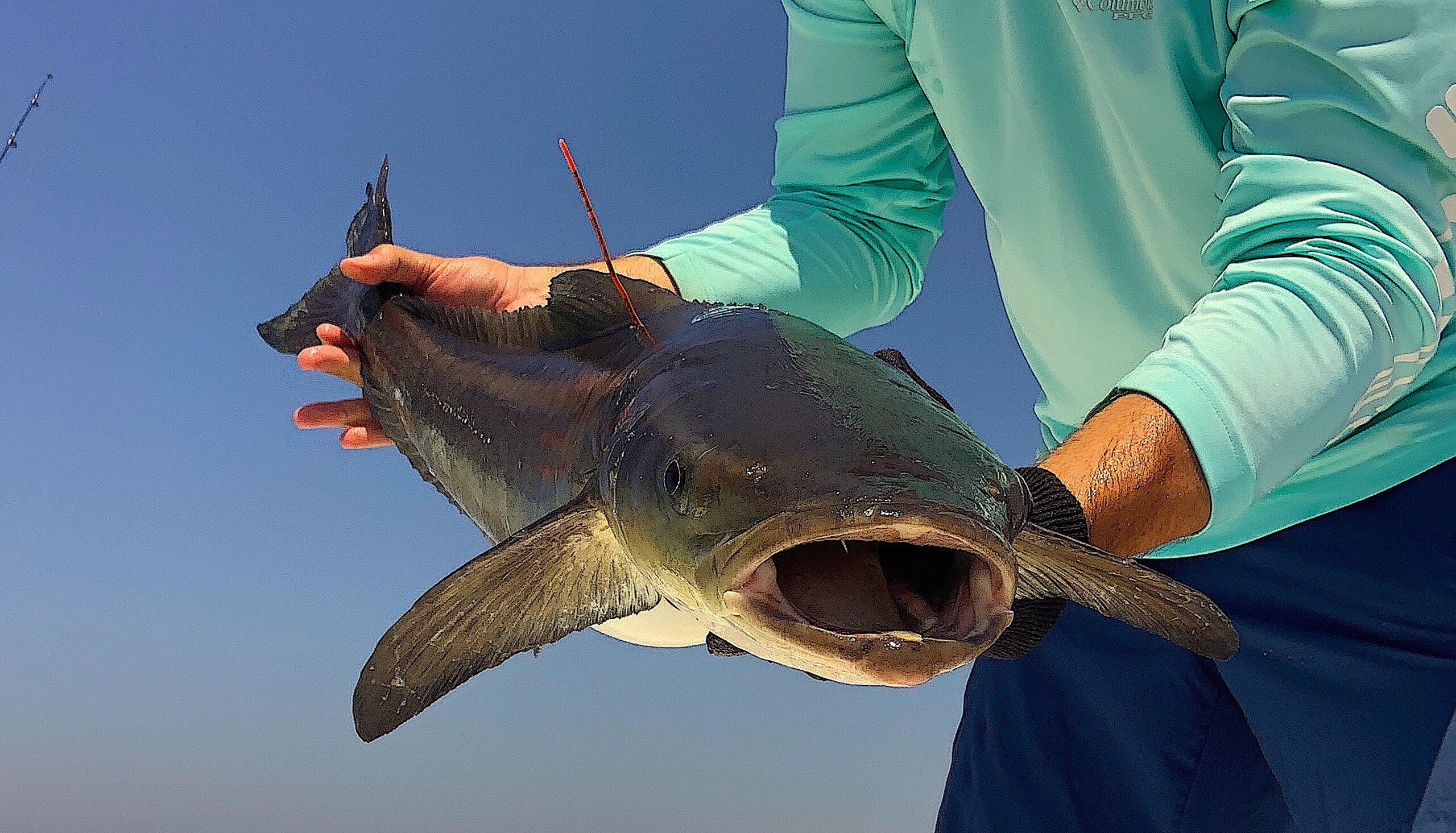Where Do 400,000 Fishes Go?

Recapturing tagged fish helps anglers learn when and where to find them.
If you target cobia and want to know when to first expect them in Virginia, you might keep your eyes out for the first bloom on your gardenia bush, or read the fishing reports from Oregon Inlet — or, if you’re in the know, you might ask a volunteer tagger from the Virginia Game Fish Tagging Program.
Research Need
The Virginia Game Fish Tagging Program initially started in 1995 to learn more about red drum when scientists realized they lacked critical habitat and seasonal movement data. Researchers from the Virginia Institute of Marine Science and the Virginia Marine Resources Commission partnered with anglers to tag and release popular recreational fishes.
The program grew to include ten species: black drum, black sea bass, cobia, summer flounder, red drum, sheepshead, spadefish, speckled trout, tautog, and grey triggerfish.
What did they study?
Trained volunteer recreational anglers tag fish that are recreationally important (and that other research programs aren’t already tagging in Virginia). The program also strives to educate anglers about the benefits of proper techniques for catching, handling, releasing, and tagging fishes.
Annually, about 10% of the program’s target species are recaptured, and this data provides information about migratory patterns, habitat use, and growth. The program also provides complementary data on the number and size distribution of recreationally popular fishes.
What did they find?
Over the past 27 years, the program’s volunteers have tagged more than 400,000 fishes. These results are important to both the angling community and to fishery managers. Data informs state compliance reports, as well as coastal and federal management groups.
Our tag recapture data helped elucidate the migratory patterns of the coast-wide stock of cobia, for instance, and it played a part in how the stock is managed geographically. The coast-wide stock previously was managed with respect to the Gulf of Mexico and East Coast/Atlantic regions. The program’s data (along with other data) helped to show that the stock is really divided somewhere near the Florida/Georgia line, with some potential subpopulations up the East Coast.
Anything else?
Anglers who volunteers for the program use their tag recapture data to learn where and when their tagged fish move, which helps them to become more efficient and often more successful fishers.
So what?
As the need for recreational fishing data becomes more apparent, the use of angler-collected data from the Virginia Game Fish Tagging Program for fisheries management has grown. Tagging program data can help fishery managers understand how far fish travel, the timing of these movements, and how these patterns change over time.
The program also allows anglers to be directly involved in fishery management by providing data as part of the management process.
Some of the program’s target species — such as speckled trout, red drum, and cobia — are often recaptured in North Carolina. North Carolina anglers can spot our bright orange tags along the dorsal fin and report their recaptures online here.
Reading
Musick, S., Gillingham, L., Perkinson, M. and Teears, T. (2022), Virginia Game Fish Tagging Program: A Nontraditional Data Source for Fisheries Management. Fisheries, 47: 478-481. https://doi.org/10.1002/fsh.10799.
by Susanna Musick (here), marine recreation specialist in the VIMS Marine Advisory Program.
lead photo: Virginia Game Fish Tagging Program volunteer captain Alex Perez holds a tagged cobia before releasing it. credit: Alex Perez.
The text from Hook, Line & Science is available to reprint and republish, but only in its entirety and with this attribution: Hook, Line & Science, courtesy of Scott Baker and Sara Mirabilio, North Carolina Sea Grant. HookLineScience.com
- Categories:



